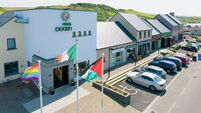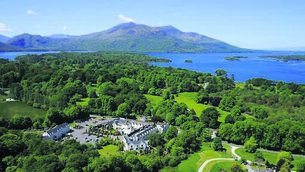History, fine food and sweeping views: There’s a lot to the island of Guernsey
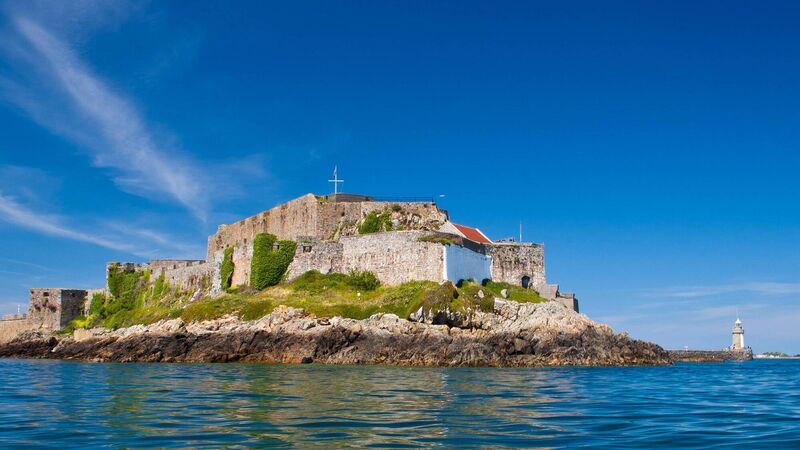
Taking in the coastal views on Guernsey. Pictures: Chris George Photography - Coast Media
About a month before travelling to Guernsey, I read an advance copy of Cathy Thomas’s Islanders, due out from Virago this summer. A collection of interconnecting short stories set on Guernsey over twenty years, and inspired by Thomas’s own upbringing on the island, it explores the joys and frustrations of small island life. Each story is set in a specific location – Port Soif, Cobo Bay, St Peter Port, the Rohais, L’Ancresse – which meant that I arrived on the island with my head already full of its Franco-English musicality.
With a population of 63,000, Guernsey is the second largest of the Channel Islands – after Jersey, with whom it shares a friendly local rivalry. The island’s history is rich and fascinating. Governed by France until 1204, when it reverted to English rule, there remains a strong French influence on the island, from its placenames to its architecture. Guernsey French is still spoken among older islanders, although a vacuum created by World War II – when the island was occupied by Germany, and most of the young people were evacuated to mainland UK – meant that the patois is no longer the commonly spoken language of the island. Today, Guernsey is largely self-governing, though remains a Crown Dependency: English is spoken and sterling is the accepted currency.
We touch down in Guernsey Airport on a drizzly Tuesday afternoon, an hour and 35 minutes from Dublin. (Aurigny, Guernsey’s national airline, now operates three direct flights a week from Ireland – more information is available at aurigny.com.) Our base for our two-night stay is the four-star Fermain Valley Hotel on the south-east coast of the island, with stunning views of the nearby Fermain Bay. The Fermain Valley offers a range of rooms and suites starting at £120, including four treehouse suites: rustic yet contemporary rooms nestled in the hotel gardens with access to an outdoor jacuzzi. The hotel also has several dining options, including the Mexican restaurant Búho, which offers crowd-pleasing mains, tasty side dishes and an extensive margarita menu.
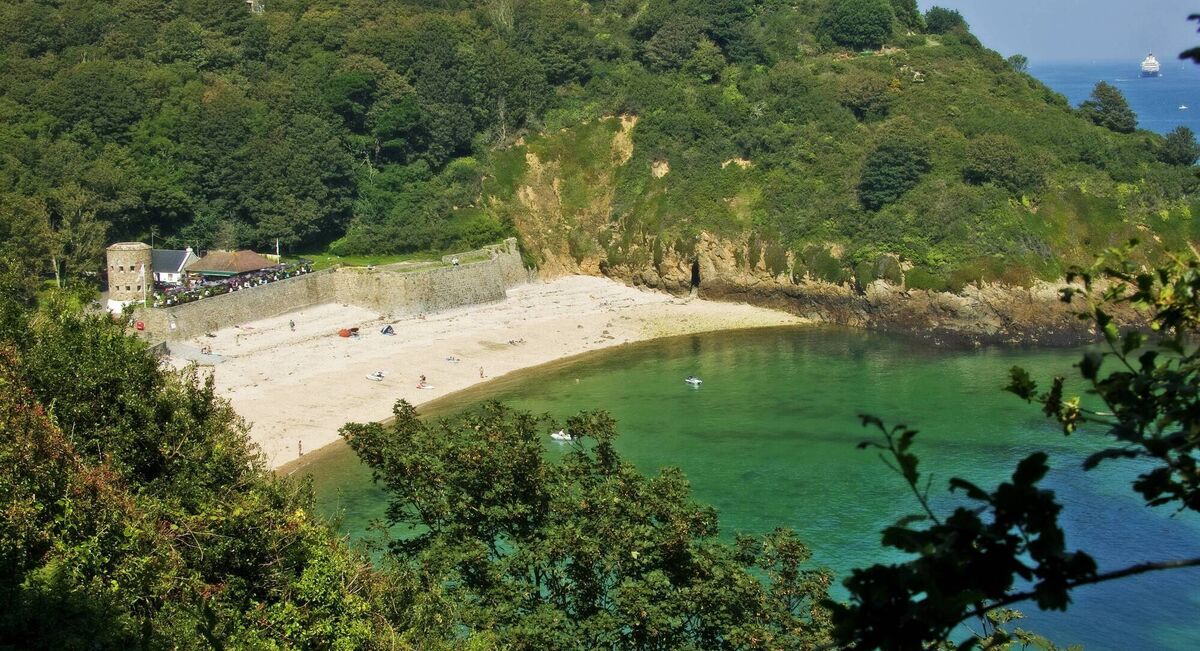
After checking in, we visit the nearby Bella Luce Hotel, home to Wheadon’s Distillery, to get a taste of some local tipples: a ‘Gintroduction’, if you will (£25 per person). Standing next to the beautiful copper still, hotel sommelier Will guides us through a tasting of small-batch gins, despite reminding us more than once that he is not fond of the stuff himself. Wheadon’s gins are flavoured with rock samphire, pink grapefruit, mandarin limes and other local botanicals; this first-time gin drinker was impressed. Besides the Gintroduction, the Bella Luce offers a range of other packages, including Design Your Own Distillation, in which guests are given the opportunity to distil – and of course, take home – their own bespoke gin.
To round off the evening, we visit the Copenhagen Bar and Grill in St Peter Port – the island’s capital – for dinner. Those expecting a Nordic twist to the cuisine may be surprised, as the restaurant is named for the favourite horse of the Duke of Wellington rather than the Danish capital. I order pan-fried calamari for starters and grilled fillet of brill for mains; the seafood, as one would expect from an island destination, is excellent.

A useful number to bear in mind on Guernsey is 27: the island is 27 miles from France, has a perimeter of 27 miles, and an area of 27 square miles. The island is vaguely triangular, sloping from its southern cliffs to the flat north-west coast – ‘like a wedge of cheese’, in the words of our engaging and knowledgeable tour guide, Gill Girard ( gillgirardtourguide.com). Gill helped scout locations for the 2018 film The Guernsey Literary and Potato Peel Pie Society, and as she expertly navigates us through the island’s geography and history, she also entertains us with anecdotes of hanging out with Hollywood luminaries such as Kenneth Branagh, Mike Newell and Lily James.
In the morning, Gill leads us on a tour of Candie Gardens, a beautiful 19th century walled park overlooking the rooftops of St Peter Port. Guernsey enjoys a temperate microclimate with little to no frost, and the gardens showcase a range of tropical-looking succulents, ferns and orchids; according to Gill, it’s not uncommon to be picking daffodils before Christmas. The gardens are home to several attractions, including Guernsey Museum and Victoria Tower, built in 1848 to commemorate a visit of Queen Victoria to the island. Charmingly, you can borrow the key to the tower from the museum and climb its 99 steps to take in panoramic views of the island. Perhaps my favourite feature of the gardens was an imposing and energetic statue of the 19th century French author Victor Hugo, who spent a prolific fifteen years on Guernsey towards the end of his life while in political exile from France, even finishing his masterpiece Les Misérables while living on the island.
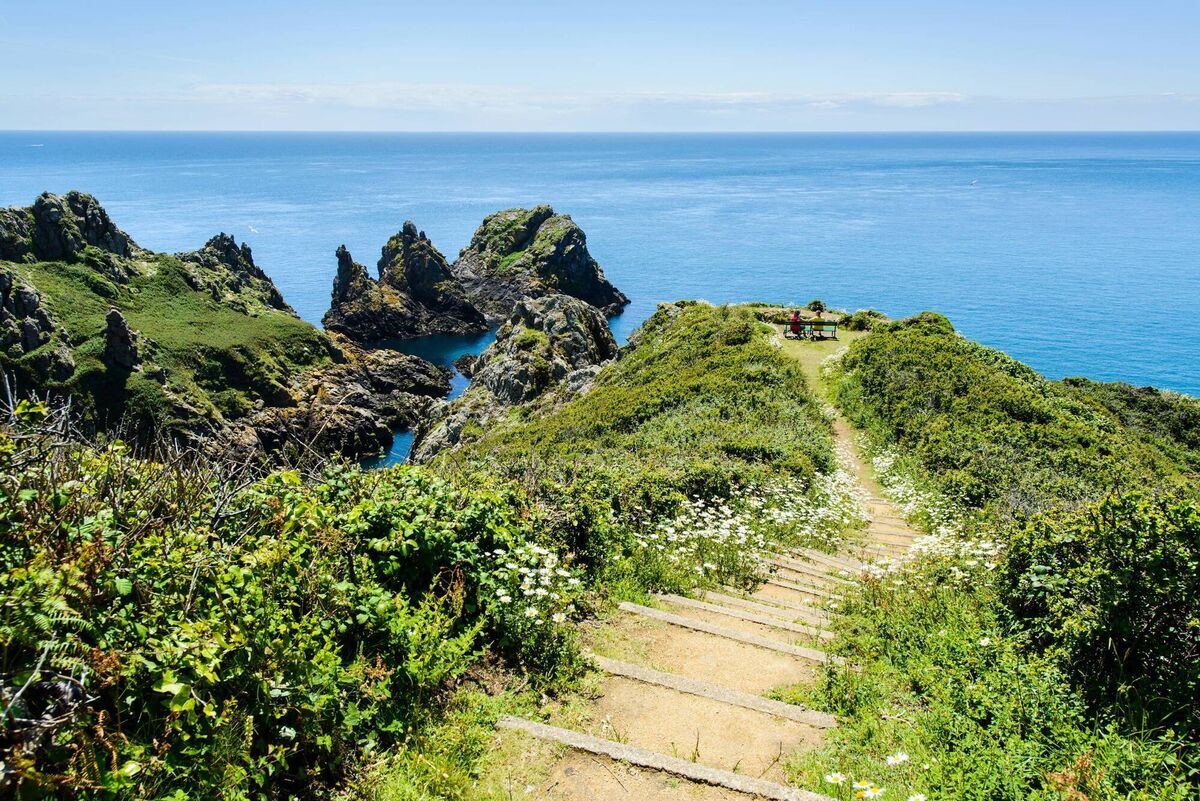
We walk through the winding streets of St Peter Port, which are pedestrianised after 10am, down to the harbour itself, where a small ferry waits to take us out to the island of Herm. On the other side of the harbour sits Castle Cornet, an imposing Norman keep dating back to the 13th century. In the summer, the castle is open to the public for Castle Nights, a free series of concerts and outdoor cinema screenings: locals and tourists alike bring picnic baskets to enjoy the free entertainment in a stunning location.
The ferry to Herm takes fifteen minutes. Just two square kilometres in size, with a population of less than 100 and no cars, the island markets itself as a slice of paradise. A popular weekend getaway spot for Guernseyans, much of the island is unspoiled countryside. We walk its coastline, stopping off at the stunning Shell Beach and viewing a neolithic tomb, before having lunch at the White House Hotel; other accommodation options on the island include campsites and holiday cottages. I thoroughly enjoy my lunch of pan-seared sea bream, washed down with a glass of Waverider pale ale from the local Liberation Brewing Co.
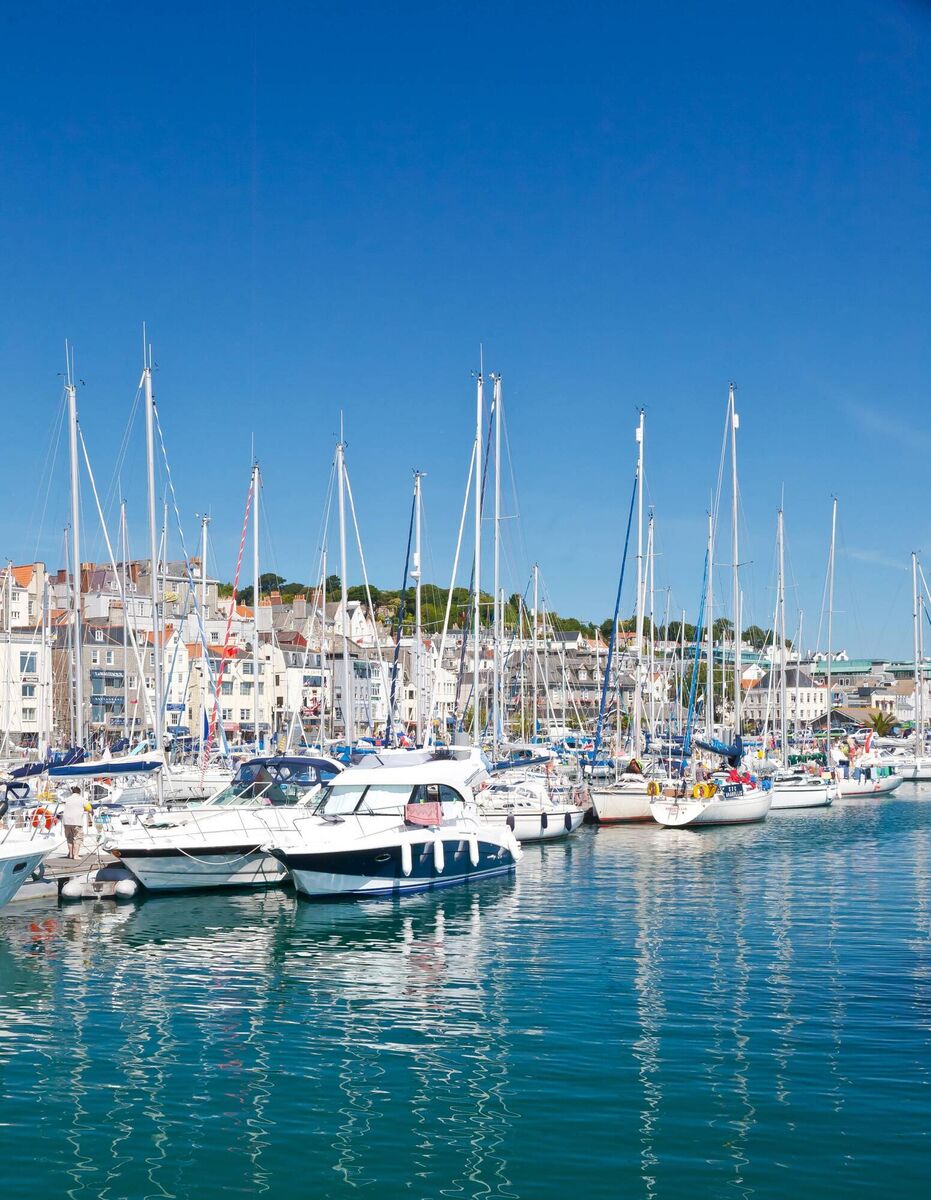
Back on the mainland, we convene on the west coast for a cycle tour led by Outdoor Guernsey (£45pp including bike hire). Rue, our guide, leads us on a picturesque and – thankfully, mostly flat – coastal tour. The speed limit on Guernsey is 35mph, making it feel safe for groups and kids, and vehicles are a rarity on some of the smaller back roads. We descend into a German bunker, used to store armaments during World War II and – according to Rue – now used more commonly as a party location for the island’s teens. Highlights on this tour include Fort Saumarez, a Martello tower topped with a four-storey observation tower built by the Germans during the occupation, and the tidal island of Lihou, 400m from shore, which can be walked out to during low tide.
Rue points out to us the ‘witches’ seats’ on the chimneys of older farmhouses – little stone outposts offered as a space for witches to rest, in the hopes that they wouldn’t cause havoc for the occupants. Guernsey teems with these snippets of delightful lore; families, history buffs, nature lovers and outdoorsy types will all feel equally at home here.
For more information on the Islands of Guernsey see visitguernsey.com








